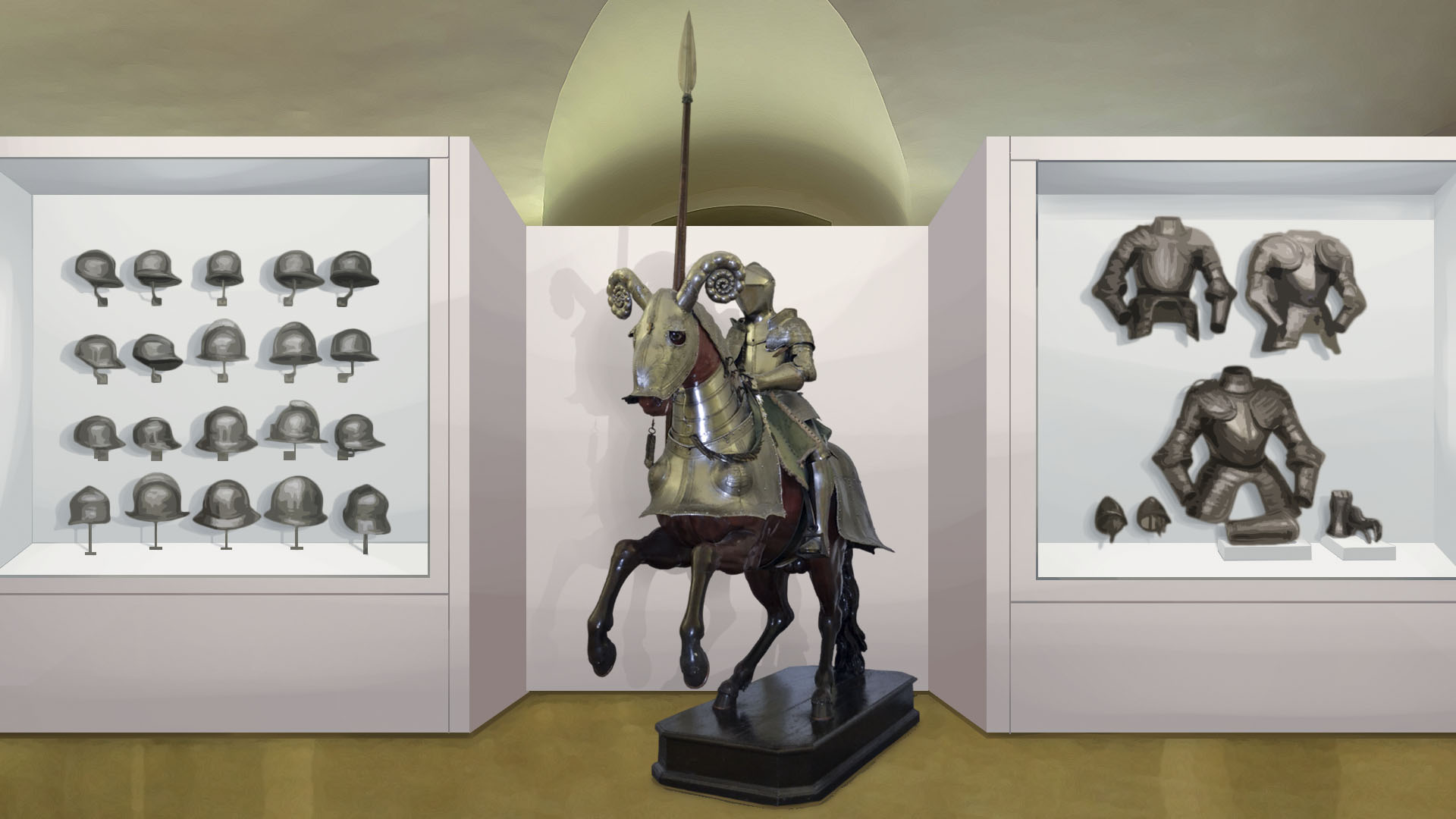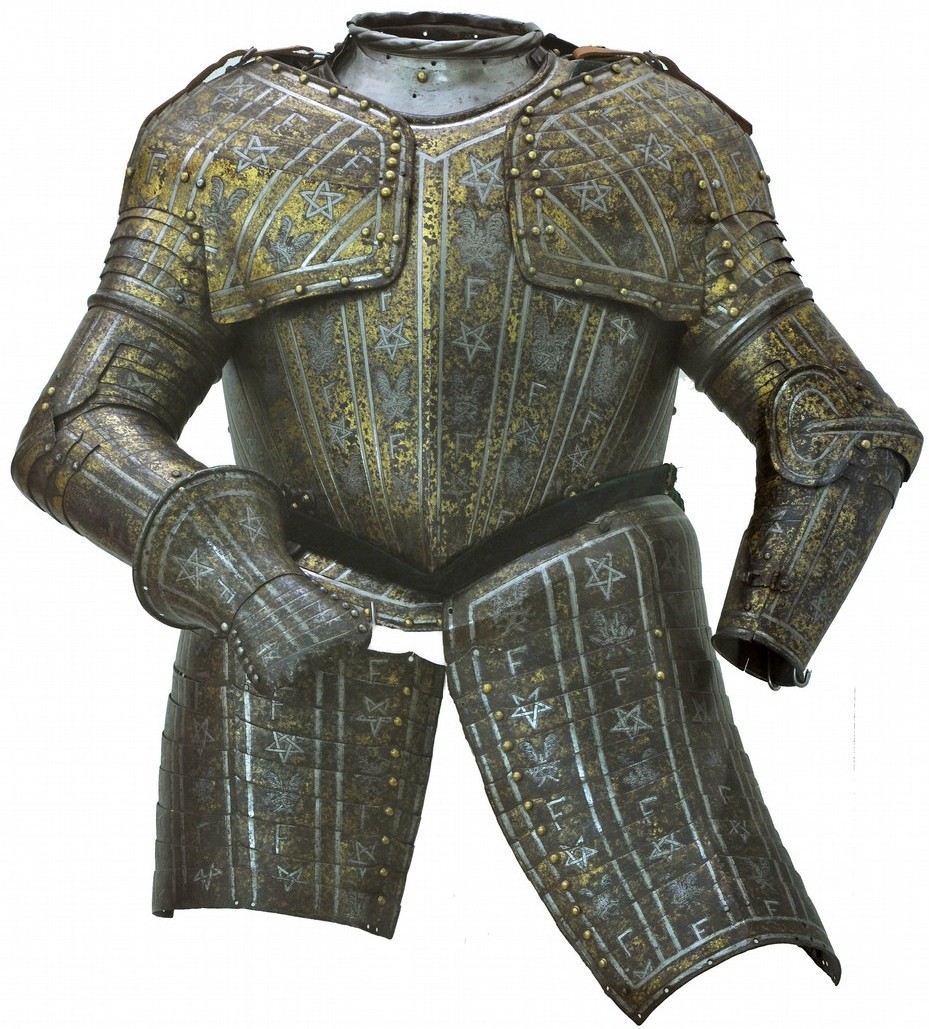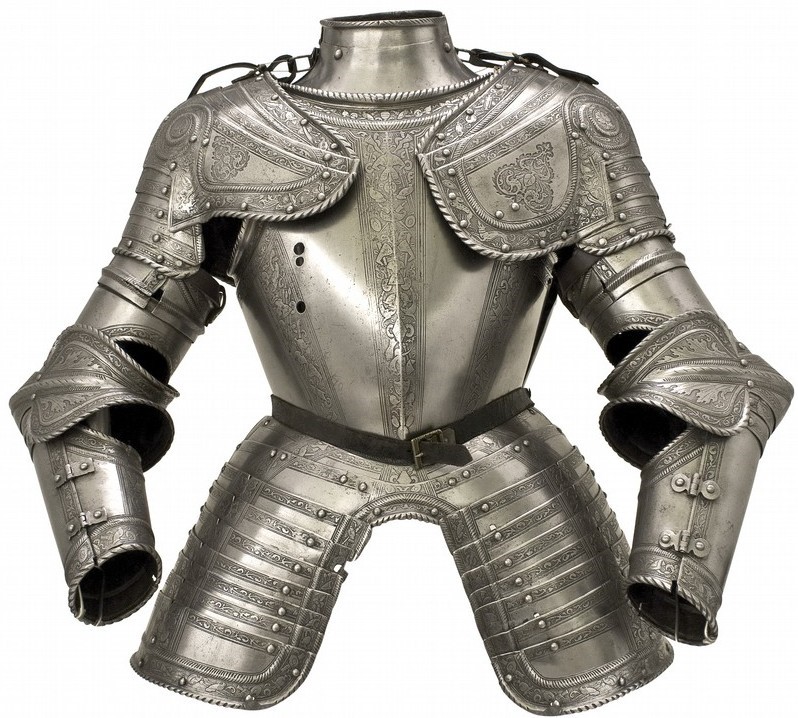

During the Middle Ages and up until the 18th century, the manufacture of armour was complicated work that needed specialist craftsmen such as armourers and assemblers, and also engravers. Armour was made from pieces of steel or wrought iron that had to be hammered into thin sheets which were then joined together and decorated.
Tournaments began in about the 11th century as a series of trials in the form of "championships" in which knights took part. At first, the trials in which a battle was simulated were held in a circular enclosure where those who were going to fight went round and round. That's where their name, torneo, comes from: from tourner, French for to turn. The weapons used were similar to those used in combat, but modified to avoid seriously wounding the opponent: blunt lances and swords were used.
The first trial in a tournament was usually the joust, which is a combat or duel between two knights armed with lances who tried to knock each other off their horses.
Over time, the family of the Dukes of Medinaceli collected one of the most important armouries or collections of armour and edged weapons and firearms in Spain. Their descendants donated it to the Army Museum to be kept there and exhibited to the public.

Armour of Gómez Suárez de Figueroa:
The collection of armour in the Army Museum includes such striking examples as the half-armour of Gómez Suárez de Figueroa, 3rd Duke of Feria (1587-1634).
It is made of very hard steel and decorated all over with the Duke's symbols such as the "F" of Feria, five-pointed stars, and palms.
It is a dress half-armour worn over rich civilian clothes and was used as a symbol of prestige, power and ostentation.

Children’s Armour:
Among these pieces of the Medinaceli collection are some children’s suits of armour, which were specially made for the sons of kings or nobles, who used them to take part in parades and train for war.
